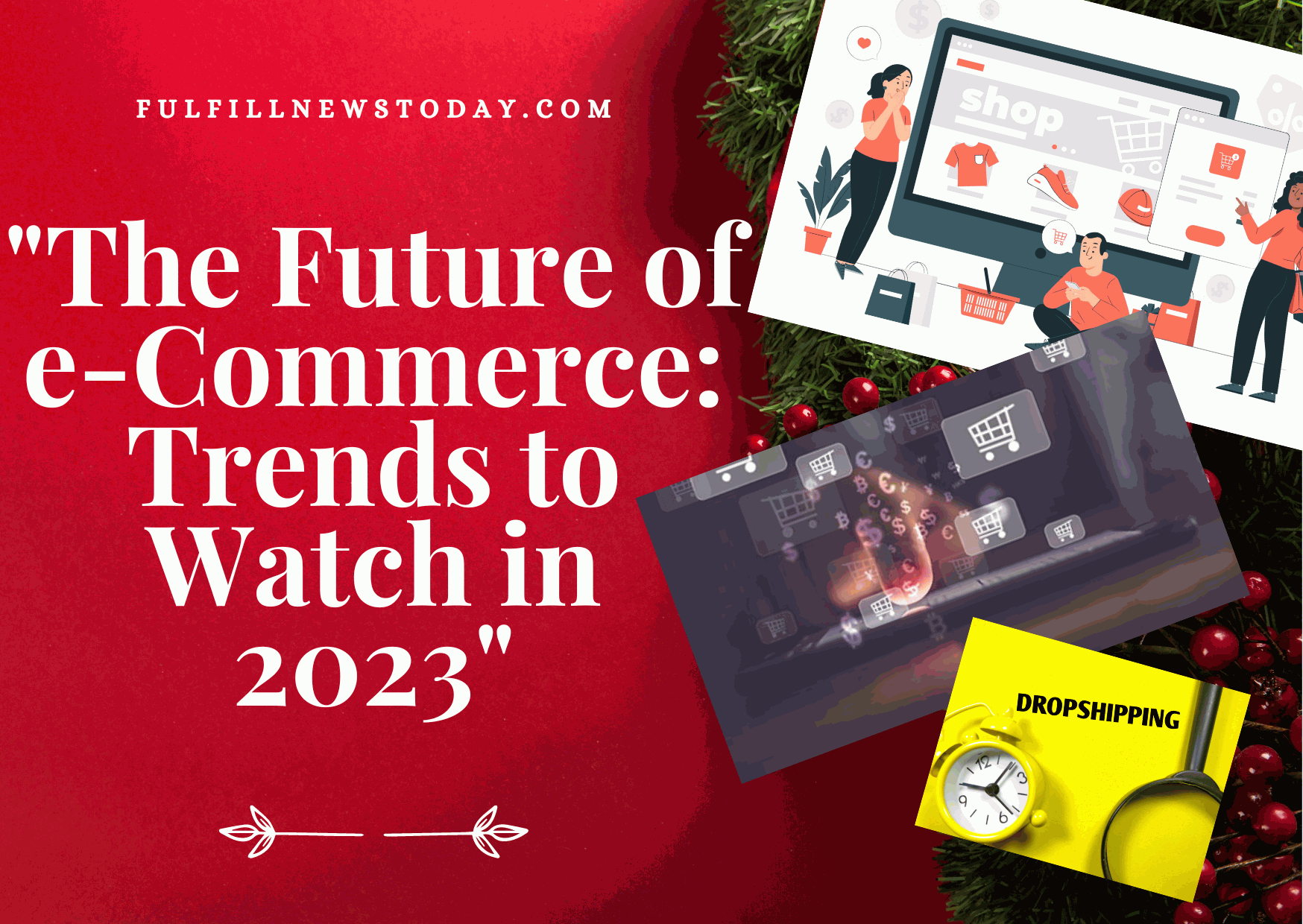E-commerce refers to buying and selling goods and services over the internet. In today’s market, it has become a crucial part of many businesses, both big and small, as it allows companies to reach a wider audience and offer their products or services 24/7.
With the rise of smartphones and other mobile devices, mobile commerce (m-commerce) has also become a rapidly growing segment of e-commerce, making it even more convenient for customers to shop online.
Additionally, advancements in payment technology, such as digital wallets and cryptocurrencies, have made online transactions safer and more secure.
Types of Five Roles:
1 Increased Use of Artificial Intelligence
2 Rise of Voice-Enabled Shopping
3 Growth of Mobile E-Commerce
4 Expansion of Social Media as a Shopping Channel
5 Emergence of Virtual and Augmented reality

The increasing use of social media and online marketplaces, such as Amazon and Alibaba, has significantly impacted the e-commerce industry. In conclusion, e-commerce is an essential aspect of the modern business landscape and continues to evolve as technology advances.
Increased Use of Artificial Intelligence :
The increased use of artificial intelligence (AI) has brought about a revolutionary change in how businesses operate and consumers interact with technology.
AI is the development of computer systems that can perform tasks that typically require human intelligence, such as recognizing speech, making decisions, and solving problems.
As technology continues to advance, AI is becoming more integrated into our daily lives, from virtual personal assistants and chatbots to self-driving cars and personalized shopping recommendations.
The benefits of AI are vast, including increased efficiency, accuracy, and cost savings. AI is also changing the job market, as it can automate specific tasks previously performed by humans. As AI continues to evolve, it is expected to bring about even more significant changes shortly.
Rise of Voice-Enabled Shopping :
Voice-Enabled Shopping is a rapidly growing trend in the e-commerce industry. It refers to the use of voice-activated devices, such as Amazon Alexa, Google Home, and Apple Siri, to shop for products and services.
This technology allows customers to simply use their voice to search for products, place orders, and make payments, making the shopping experience faster and more convenient.
With the rise of smart home technology and the increasing popularity of voice assistants, voice-enabled shopping is becoming a mainstream way of shopping for millions of people. This trend is also driving the growth of voice commerce, which is projected to become a multi-billion-dollar market shortly.
Growth of Mobile E-Commerce :
Mobile e-commerce refers to the use of mobile devices such as smartphones and tablets to purchase goods and services online. The growth of mobile e-commerce has been fueled by the increasing popularity of mobile devices, the convenience of online shopping, and the rise of mobile commerce applications.
The ease of use and accessibility of mobile e-commerce has made it a popular option for consumers who can now make purchases on the go. The trend of mobile shopping has changed the way retailers do business and has created new opportunities for companies to reach consumers.
With the continued growth of mobile devices, the future of mobile e-commerce is expected to be even more dynamic, offering new opportunities for businesses to engage with customers and drive sales.
Expansion of Social Media as a Shopping Channel :
Social media has been growing as a shopping channel over the years, providing users with a wide range of products and services at the convenience of their fingertips.

With the increasing popularity of platforms like Instagram, Facebook, and Pinterest, businesses are leveraging these platforms to showcase their products, offer discounts, and engage with their target audience.
With features like shoppable posts, in-app purchasing, and clickable links, social media has made it easier for customers to make purchases directly through their social media profiles.
This shift in consumer behavior has been driven by the ease of accessibility and the ability to purchase products with just a few clicks, making social media a prime channel for retailers to reach and engage with customers.
The Emergence of Virtual and Augmented reality :
Virtual reality (VR) and augmented reality (AR) have been making a lot of progress in recent years, especially with the advancement of technology. VR and AR have become more accessible to the masses and are now used in various industries such as entertainment, education, healthcare, and marketing.
The emergence of VR and AR channels has made it possible for people to experience immersive experiences like never before. VR provides an immersive experience by completely blocking out the real world and allowing users to experience a completely virtual environment. AR, on the other hand, enhances the real world by adding digital elements to it.
One of the biggest benefits of VR and AR channels is that they allow users to experience things that they wouldn’t be able to otherwise, such as visiting other countries, experiencing simulations of different scenarios, or exploring new technologies. This opens up a whole new world of opportunities for people to learn and experience new things.
CONCLUSION :
Final thoughts on the future of e-commerce,
As a language model AI, I don’t have personal opinions, but based on the current trend and advancements in technology, it can be predicted that e-commerce will continue to grow and evolve in the future. With the increasing number of people turning to online shopping, businesses will continue to focus on providing a seamless and personalized shopping experience to their customers.
Advancements in technology such as Artificial Intelligence, Virtual Reality, and Augmented Reality will revolutionize the e-commerce industry and provide customers with a more interactive and engaging shopping experience. The use of drones and autonomous delivery systems will also become more prevalent, making delivery faster and more efficient.
Another trend that is likely to continue is the integration of social media with e-commerce. Social media platforms like Instagram and Facebook are already offering shopping options, and it’s only a matter of time before other platforms follow suit.

In conclusion, the future of e-commerce is bright and full of possibilities. With the ongoing advancements in technology, businesses will have more opportunities to provide a better shopping experience for their customers and keep up with the changing trends in the market.
Read More: “The Top 10 Most Popular Hobbies for a Better Work-Life Balance”
